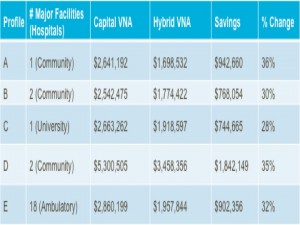My recently completed white paper The Anatomy of a Vendor Neutral Archive (VNA) Done Right: The Case for Silo Busting focuses on the subject of Vendor Neutral Archive, but it is more than just another rehash of the technical argument. Well, there are the obligatory opening paragraphs that present the technical background, but that’s just to make sure we are all on the same page with respect to system descriptions and vocabulary. The real meat of this paper is a presentation of system architectures; specifically architectures that support business continuity, and a brief look at a real world Cost Model.
Since a dual-sited VNA is both large and complex, requiring geographically separated data centers, the obvious questions are: [1] what are the best deployment options, and [2] what are the associated Total Cost of Ownership (TCO) figures? The paper considers concepts like Cloud Infrastructure and Software as a Service, because they can have a significant impact on TCO. In my opinion, organizations that do not already have a remote secondary data center and have limited IT resources need to seriously consider any strategy that simplifies system management and lowers costs.
The Cost Model is very revealing, as it compares a dual-sited, on-premise, self-managed VNA to a dual-sited, on-premise/off-premise, vendor-managed (SaaS) VNA. The later is now being referred to as a Hybrid VNA. The model was built for five different organization profiles using comparable configurations, and real world infrastructure and operational costs.
In the Table reproduced here, you can see the encouraging results. The paper was sponsored by an unrestricted grant from Iron Mountain, and I assure the reader that I was involved in assembling the components of the model and approved every one of the line item costs.
Organizations that are getting serious about deploying a VNA will need a positive cost model to win project approval. As part of that process, I strongly encourage looking at the Hybrid VNA.

